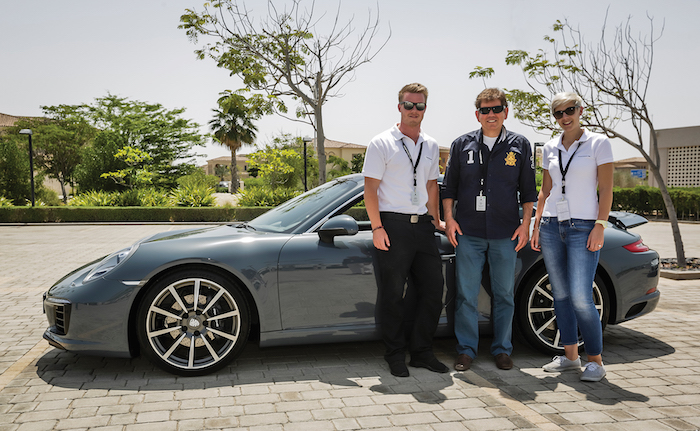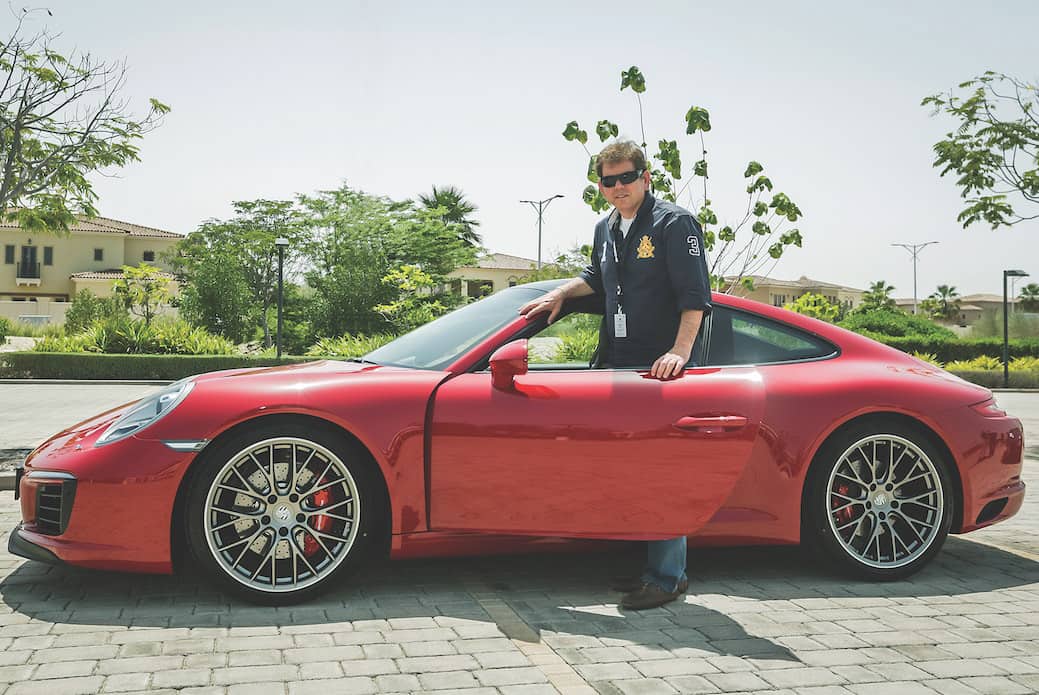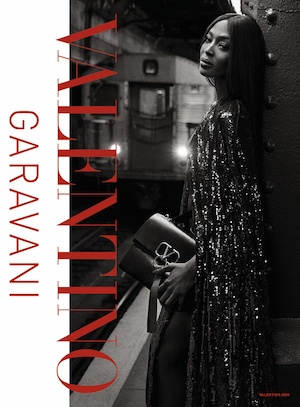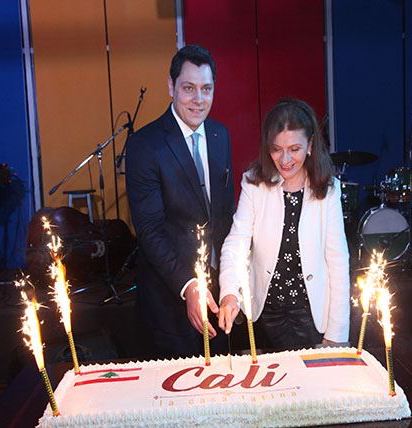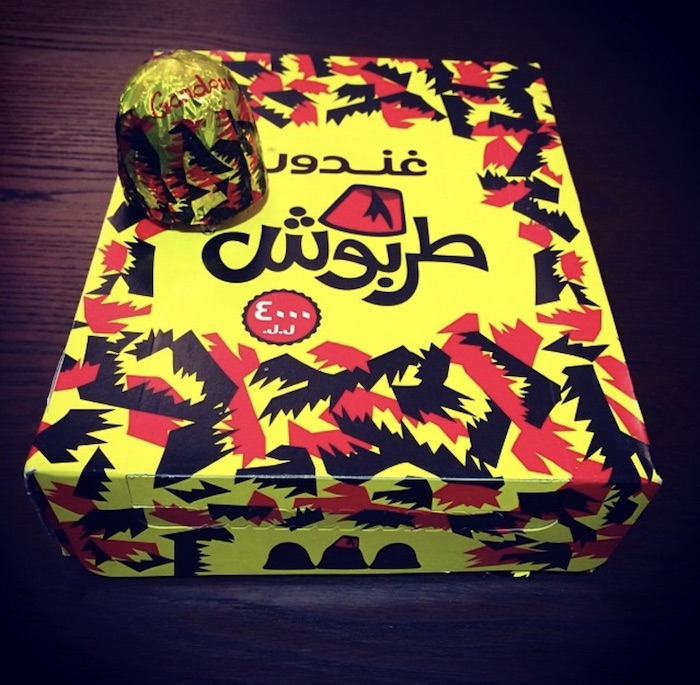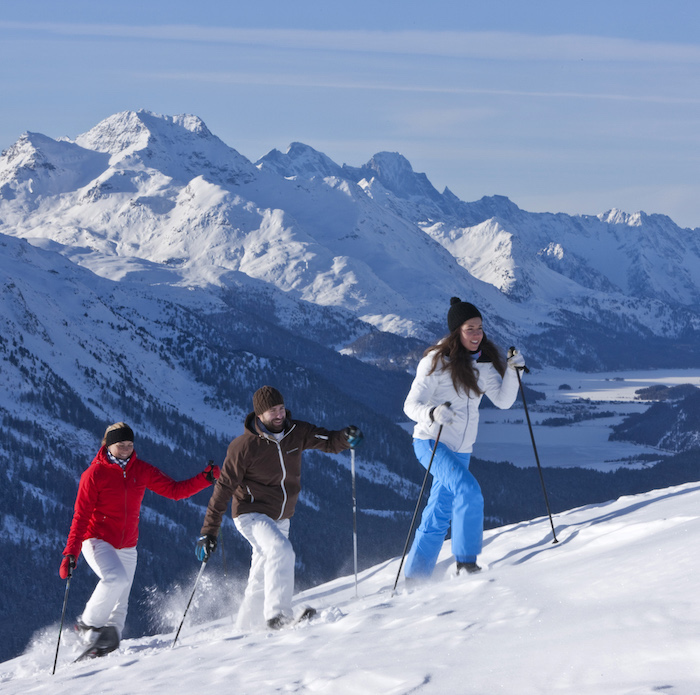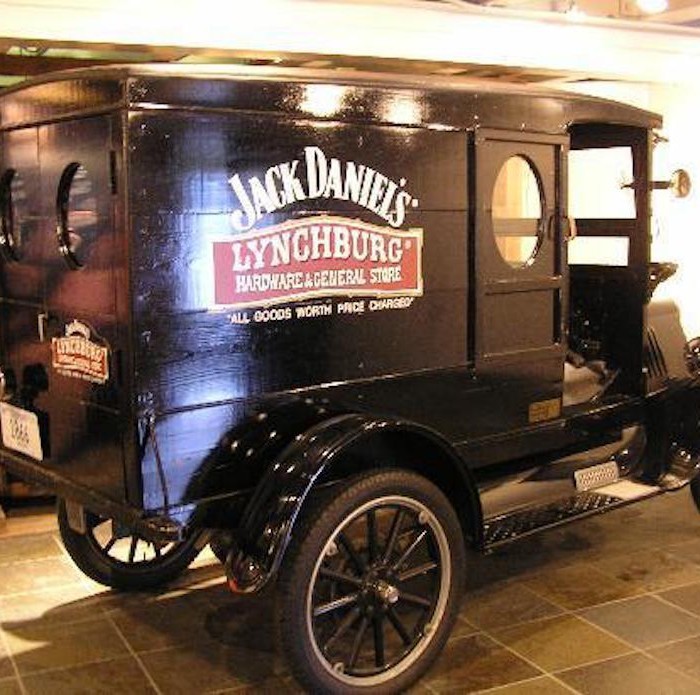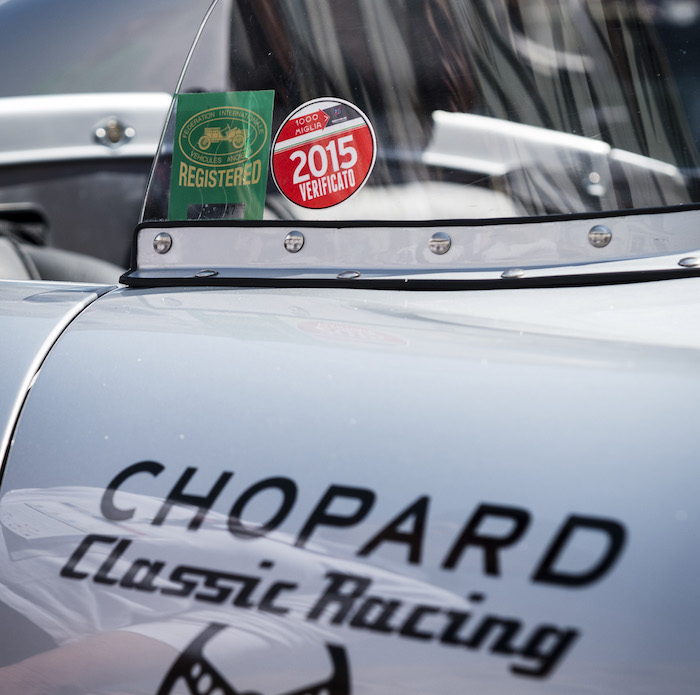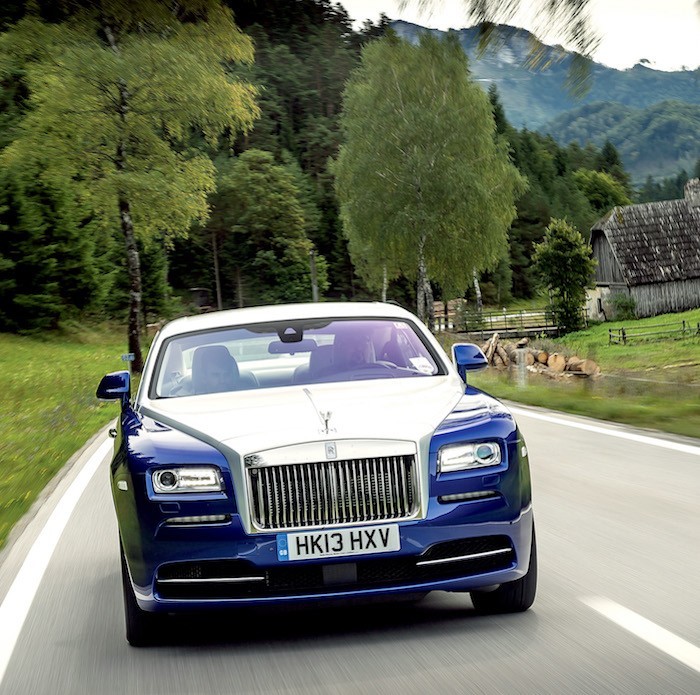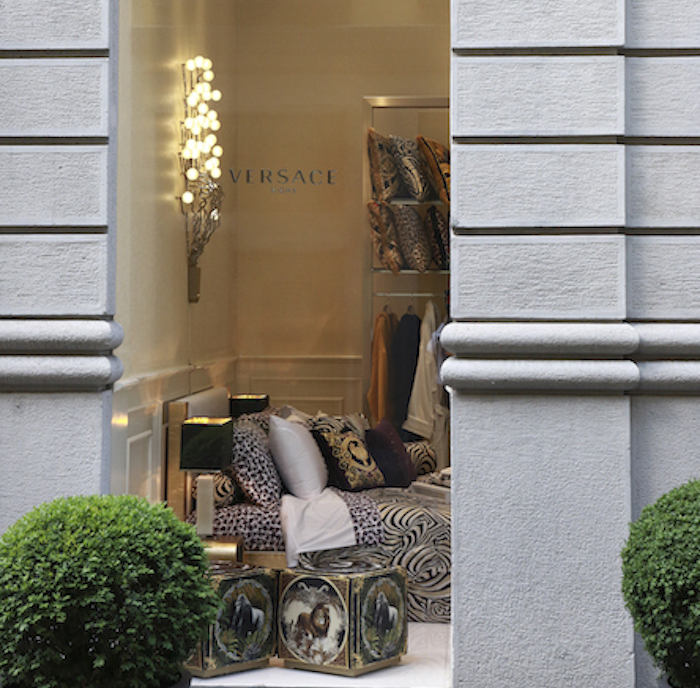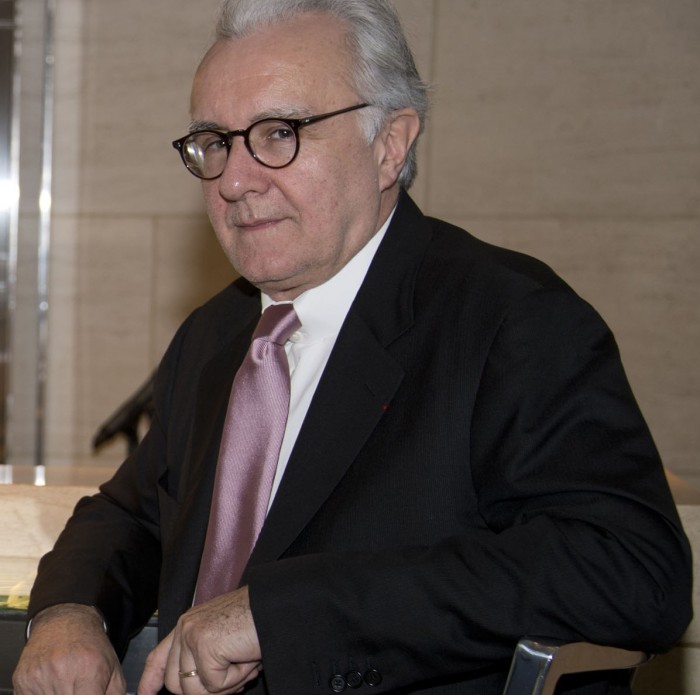Lifestyle
Porsche Re-inspired
New Porsche models reimagine sports car legend
by Ghazi Harb
April 29, 2016
I am one of the many sports car enthusiasts and Porsche loyalists who have been awaiting the debut of the next generation of the Porsche 718 Boxster and the new Porsche 911. So it was with great anticipation that I made the trip to Abu Dhabi's Yas Marina Circuit, home of Formula 1’s Abu Dhabi Grand Prix, to take several models of the sports car legend for a spin. I always feel a certain connection to the car and to the road when seated behind the steering wheels of precisely engineered and immensely beautiful Porsches.
I love Porsches for all the reasons that every other sports car aficionado loves them — for their power, speed, agility and grace on the road as well as for the way they roar when a full thrust of power surges through their engines.
As I entered the track and approached the 718 Boxster, I was well aware of the industry feedback facing the next generation 718, which has both continued and broken tradition. In keeping with Porsche’s legendary racecars of the 1950s and 1960s, the 718 Boxster features a four-cylinder flat engine enhanced with turbo, renowned for winning many races, including the Targa Florio and the 24 Hours of Le Mans. For more modern enthusiasts, this is a sharp departure from the revered six-cylinder, naturally aspirated engine that’s legendary for the primal roar of its engine and its power delivery.
As I climbed into the car and positioned myself behind the wheel, I decided to let the car show me its full capabilities. Within seconds, I felt the enhancements to the engine as I hugged the curves around the Yas Marina Circuit.
Under the bonnet the 718 Boxster develops a blistering 300 hp from just 2.0 liters of engine displacement. The 718 Boxster S, on the other hand, now produces 350 hp from 2.5 liters of displacement, using a turbocharger with variable turbine geometry (VTG). Porsche is the only manufacturer to offer VTG technology in production cars with petrol-driven engines, both in the 911 Turbo and in the 718 Boxster S. Both models feature a considerable power gain of 35 hp compared to their predecessors and thanks to the new turbo engines, up to 13 percent lower fuel consumption.
The 718 Boxster S now has a maximum torque of 420 Nm, while the base model offers 380 Nm. When equipped with Porsche Doppelkupplungsgetriebe (PDK) and Sport Chrono Package, the 718 Boxster sprints from zero to 100 km/h in 4.7 seconds, with a top speed of 275 km/h. Featuring the same options, the 718 Boxster S reaches the 100-km/h mark in 4.2 seconds and has a top speed of 285 km/h.
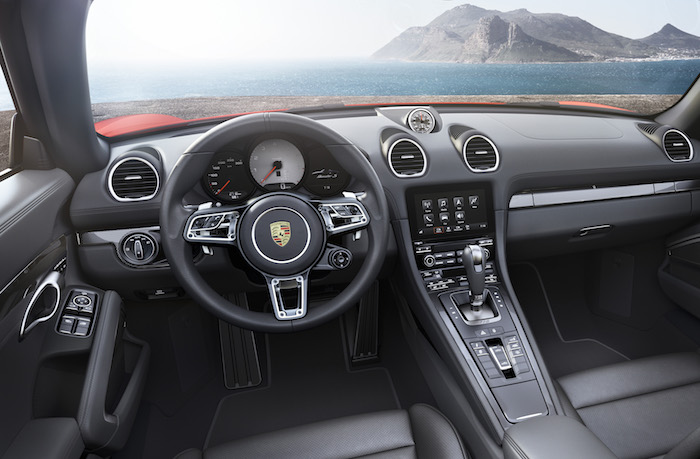
718 Boxster interior
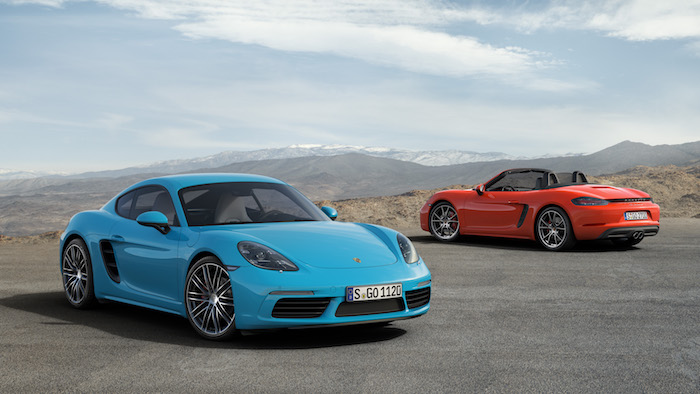
The Porsche 718 Boxster did not disappoint on the road. The drive featured a surprising blend of speed and comfort that’s sometimes missing from sports cars. Lane changes, even at high speeds, were possible in a most graceful and effortless way. Despite the absence of the guttural sound we had all grown to know and love in the six-cylinder, naturally aspirated engine, the driving experience continues to be superb.
While much of the hype around the 718 Boxster and the Porsche 911 has surrounded the changes to the cars’ engines, extensive work and detail has gone into enhancing the already iconic bodies of the two standout vehicles.
An upgraded electromechanical steering system in the 718 now allows for the car to be more agile and easier to steer, both on the race track and in everyday traffic. The rear of the car is distinguished from earlier models with four-point brake lights, as well as a bold accent bar that stretches across the width of the back of the car, prominently featuring the Porsche name. The rear wing has also been widened and enhanced aerodynamically to complement the brake lights.
I have always been wowed by the body of the Boxster so the enhancements only added to the car’s ever-present sex appeal. Both aesthetically and from an engineering perspective, it’s apparent that the car is always ready to streak across the race track. The appeal for many, including myself, is that it’s also ready to cruise down the street in everyday traffic.
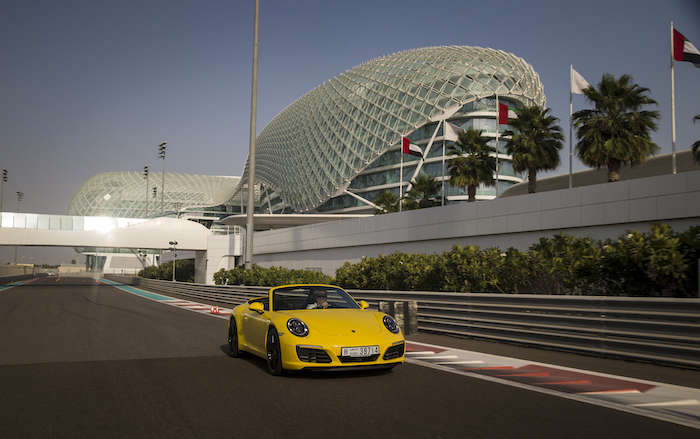
Test driving the Porsche 911 at the Yas Marina Circuit- Abu Dhabi
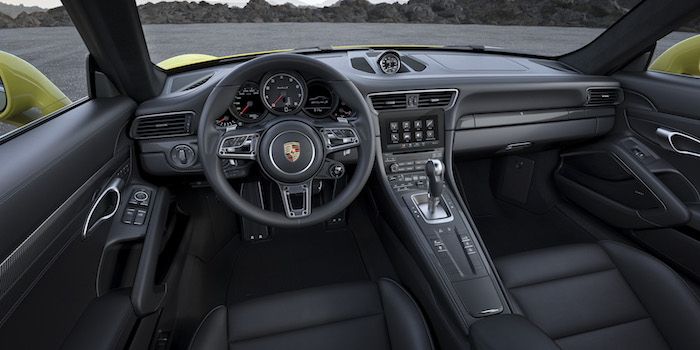
911 Turbo S and 911 Turbo S Cabriolet
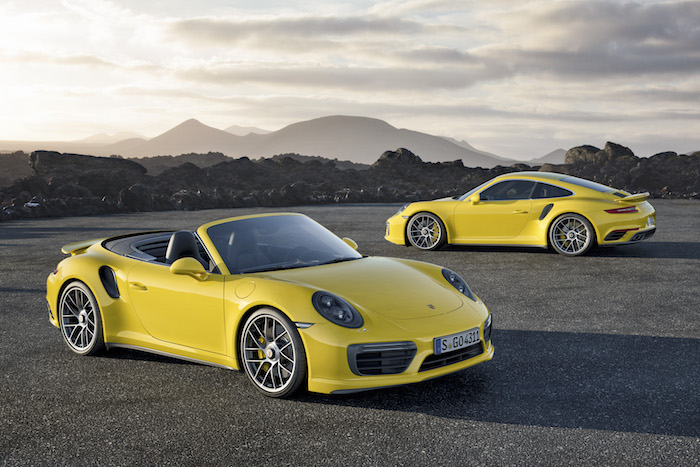
The 911 Carrera’s appearance has sharpened in design to present a feel of greater precision. Inspired by an aircraft wing, the sculpturally formed profile of the front spoiler extends over the entire vehicle width. The prominent light-refracting edges emphasize the new flaps in the air intakes; the 911 Carrera is the first Porsche since the 918 Spyder to feature these adaptive aerodynamic components.
Similar to the 718, the Porsche 911 Carrera and Targa have entered a new era with a bi-turbo system which has increased the horsepower by 20 across the range. In the base model 911 Carrera this means 370 hp at the rear of the vehicle, boosting it from zero to 100 km/h in 4.2 seconds while the Carrera S now develops 420 hp and completes the zero to 100 km/h sprint in just 3.9 seconds.
Thanks to a 3.8-litre six-cylinder bi-turbo engine, the 911 Turbo now delivers 540 hp, with the coupe model sprinting from zero to 100 km/h in 3.0 seconds. Meanwhile, as a result of new turbochargers with larger compressors, the new Turbo S develops 580 hp and is the first production 911 to accelerate to 100 km/h in less than three seconds, reaching the milestone speed in 2.9 seconds.
The new Porsche 911 and 718 Boxster represent the latest evolution of Porsche sports cars. Within their price ranges, few cars can rival the speed, agility, handling and fuel efficiency of the Porsche 911 and the 718 Boxster. The throwback to Porsche’s past sets the path for a new generation of Porsches that may set the trend for years to come. I look forward to keeping an eye out for Porsches’ future endeavors to redefine and reinvent what it means to be a standard setter in the sports car industry.
